

Проект «Голоса еврейских местечек. Могилевская область».פיתוח קשרי התרבות בין העמים של ישראל ובלרוס
|
|---|
Поиск по сайту |
|
MainNew publicationsContactsSite mapVitebsk regionMogilev regionMinsk regionAlexander Litin, Ida Shenderovich
|
Alexander Litin, Ida ShenderovichBYHOV, THE STORY OF THE TOWNByhov is located on the bank of the Dnieper, 45 km south of Mogilev. The town was first mentioned in manusctripts in the 14th century.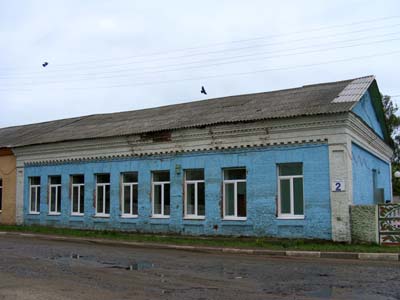
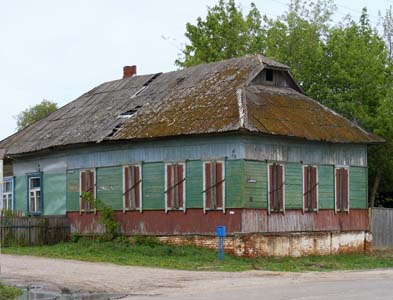 Byhov. Former hotel “Europe” in Leninskaya Street (to the left). Former Jewish house.
Byhov. Former hotel “Europe” in Leninskaya Street (to the left). Former Jewish house.
From 1784 to 1805 the number of Jews living there was between 873 and 1244. At the end of the 19th century Jews made up half of the town population. There were 11 synagogues and prayer houses. In 1923 the population of Byhov was 8333 people (from them 2846 – Jewish). Today the population of the town is 18000 people and only 30 of them – Jewish. 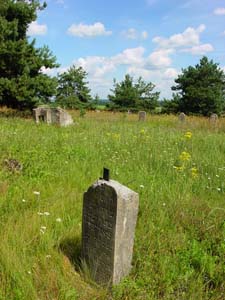
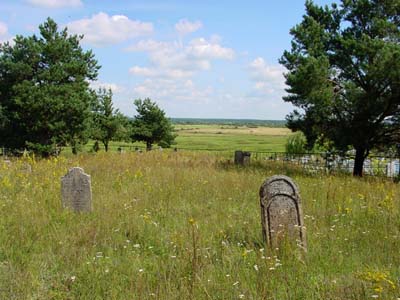
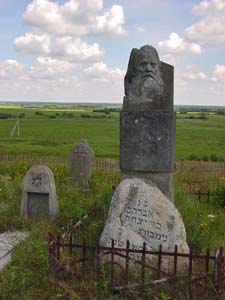 At the Jewish cemetery in Byhov.
At the Jewish cemetery in Byhov.
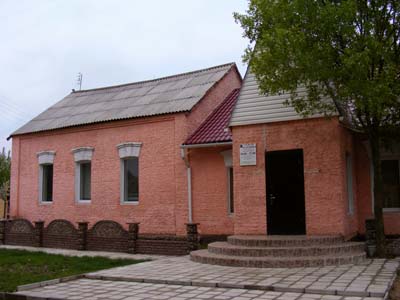 Byhov. Former synagogue. Now a café is located here.
Byhov. Former synagogue. Now a café is located here.
THE HOLOCAUSTByhov was occupied by Germans on July 3rd 1941. The first mass execution of Jews took place on August 28th 1941. On that day fascists shot 252 men. 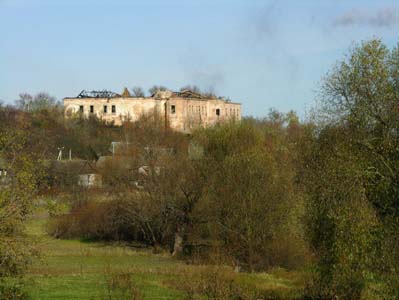
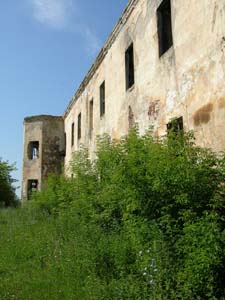 Byhov fortress. In 1941 it was a Jewish ghetto.
Byhov fortress. In 1941 it was a Jewish ghetto.
In September, 1941, there was an order to organize census of the Jewish population in Byhov. Then a ghetto was formed, where 4679 people had to live. Ghetto prisoners were the local Jews, refugees from western Belarus and Poland, and communists. The ghetto was guarded by Nazi policemen. 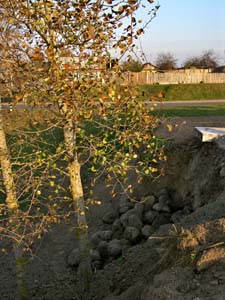
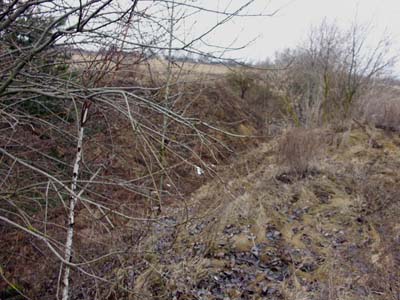 Gonkov ditch – execution site.
Gonkov ditch – execution site.
After four days in the ghetto without water and food, the prisoners were taken across the Dnieper. The execution took place 6 kilometers away from the town in a place called Maslovichi. The children, who were younger than 10, were not shot. The fascists broke their spines and threw them into the ditch while they were still alive. During September-October, 1941, arrests of Jews took place every day. They were taken out of town to Gonkin ditch. Jews were being killed in other villages of Byhov region. At the end of 1943 fascists attempted to conceal their crime. The graves were opened and the remains taken to Byhov outskirts. There Nazis burned the bodies and killed the Soviet prisoners of war, who were made to burn the bodies. In 1946 – 1947 some of the Holocaust victims were reburied at the Jewish cemetery. There two memorials were set up in memory of the killed victims. 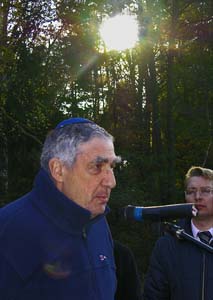 Michael Lazarus,
Michael Lazarus,at memorial opening in Maslovichi. 23.10.2006. Ilia Grigorievich Erenburg They will take their vengeance. The matter of conscience. (Essays of 1941-1945) Letter of soldier Jogan Gauster: “Dear wife. At night, while retreating, we burn everything down. The whole villages are on fire. All the crops are to burnt down as well. We rob houses because their dwellers leave villages. What do you think – should I take it with me or send these things to you?” Extracts from diary of a German corporal Otto Berger: “Old Byhov is completely destroyed. Two hundred and fifty Jews have been shot. The prisoners of war dug out their own graves. We made them stand in lines and then shot line by line. We also shot a communist. In the evening we shot two people. They dug out their own grave, kissed each other and lay down. They were father and son.” October 29th 1943. 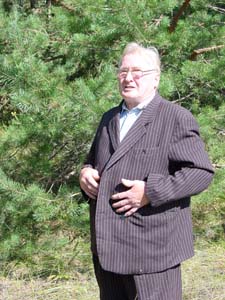 David Stepanovich Lahtyrev.
David Stepanovich Lahtyrev.
David Stepanovich Lahtyrev. From the stories of David Lahtyrev, born in 1929. Before the war I lived in the village of Sleduki not far from Byhov. At the beginning of December I went to Voronino to see a doctor. On my way there I was stopped and made to get on s truck. Soon the truck was stopped and only Nazis were allowed to go farther. I heard people shouting, crying. Then I heard shooting. I was told that fascists were shooting Jews there. My neighbor Philip was present at the execution. He later told me that the Jews had been shot in groups. Small children were thrown in the air and shot while in the air. This caused laughter. There were no attempts of fighting back. I can imagine what these people were feeling. In such situations fear and terror paralyzes everything. 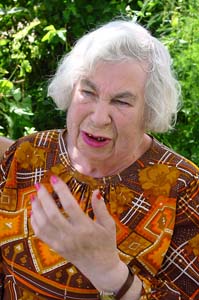 Dora Mironovna Geht.
Dora Mironovna Geht.
Dora Mironovna Geht. From the stories of Dora Geht, born in 1924. I was born in Byhov. My grandfather, Grigory Iosifovich, was a rabbi. Before the war he left for Odessa. There he died even before the war started. Father, Miron Grigorievich Geht was born in 1891 and worked as a clerk before the revolution. Mother worked in a kindergarten. There was a synagogue near our house. I remember I used to bring a sidur for my grandmother there. Later the big synagogue was closed down and we went to pray to a small prayer house. Father was a truly religious person. I managed to finish school before the war broke out. I remember I woke up in the morning and heard my father crying: “The war has been declared!” We had a big family – a brother and four sisters. On that day my brother and I were standing in a line in a bakery. We entered the shop, when Aliara Ioffe, the shop assistant told I to exit through the back door and hide ourselves. It turned out that the German tanks had already broken into the town and were shooting at the houses. When we left the shop we saw many houses were on fire. We let out our animals and left the town. I returned to Byhov in 1947. From archives of Mogilev project “Lessons of the Holocaust”) |
|||
|
|
Jewish settlements in Mogilev regionMogilev• Antonovka• Batsevichi• Belynichi• Belynkovichi• Bobruisk• Byhov• Chausy• Cherikov• Dashkovka• Dribin• Esmony• Glusk• Golovchin• Gorki• Gory• Grozdianka• Hotimsk• Kirovsk• Klichev• Konohovka• Kostukovichi• Krichev• Krucha• Krugloye• Lenino• Lubonichi• Martinovka• Moliatichi• Mstislavl• Naprasnovka• Osipovichi• Rodnia• Rudkovschina• Samotevichi• Sapezhinka• Selets• Shamovo• Shepelevichi• Shklov• Slavgorod• Staroselie• Sukhari• Svisloch• Vereschaki• Zaverezhie• Zhilichi• |
Main |
New publications |
Contacts |
Site map |
Vitebsk region |
Mogilev region |
Minsk region |